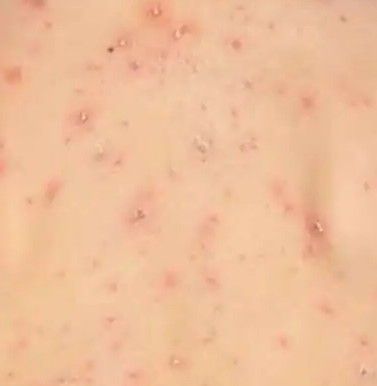Monkeypox Virus Basic Info

Human monkeypox is a zoonotic Orthopoxvirus with a presentation like smallpox. The majority of human infections occurred in Central Africa although the epidemic is now spreading in Western countries. This is not yet clear if this is due to some mutations. It is important to notice that the recent apparent increase in human monkeypox cases is now across a wide geographic area.
The World Health Organization Director-General declares, the 23 July 2022, the ongoing monkeypox outbreak a “Public Health Emergency of International Concern”.
The first outbreak of MPX reported outside of Africa was an outbreak linked to the importation of infected mammals in 2003 into the United States.
How the “Human monkeypox” can be spread?
With our actual knowledge (and if there are no more mutations in the virus), it can spread in 3 main ways:
- Direct contact with the rash, scabs, and even body fluids (blood, sperm) from a person with monkeypox.
- Touching objects: clothing, bedding, towels, subway grab bar, and all surfaces that have been used by someone infected with monkeypox.
- Close contact with respiratory secretions.
Recently it has also been reported that it can also be transmitted to the dog and from the dog to human. This is in reality a real canine disease, not a simple carriage of the virus.
Is there a cure for Human monkeypox?
There are not yet treatments specifically for monkeypox virus infections. However, monkeypox and smallpox viruses are genetically similar with similar symptoms, which means that antiviral drugs and vaccines developed to protect against smallpox may be used to prevent and treat monkeypox virus infections.
What are the symptoms?
- A rash that can initially look like pimples or blisters and may be very painful and itchy.
- Fever.
- Chills.
- Muscle aches and backache.
- Headache.
- Respiratory symptoms (e.g. sore throat, nasal congestion, or cough)
It usually takes between 5 and 21 days for the first symptoms to appear.
A recent study made by the CDC shows that Monkeypox can persist in household environments. The sample collection was conducted 15 days after the infected individual had left their home. These samples were then incubated to allow for virus isolation. RT-PCR analysis revealed that the sample was positive for MPXV DNA. At the same time, other samples were collected from other patients and analyzed.
You can read the article here: https://wwwnc.cdc.gov/eid/article/28/10/22-1047_article
If you want to know more, you can visit the following websites:
CDC: https://www.cdc.gov/poxvirus/monkeypox/
World Health Organization: https://www.who.int/news-room/fact-sheets/detail/monkeypox
European Centre for Disease Prevention and Control: https://www.ecdc.europa.eu/en/monkeypox
Morgan, C. N., Whitehill, F., Doty. J. B., et al. (2022). Environmental Persistence of Monkeypox Virus on Surfaces in Household of Person with Travel-Associated Infection, Dallas, Texas, USA, 2021. Emerging Infectious Diseases. doi:10.3201/eid2810.221047.
Evidence of human-to-dog transmission of monkeypox virus: https://www.thelancet.com/journals/lancet/article/PIIS0140-6736(22)01487-8/fulltext